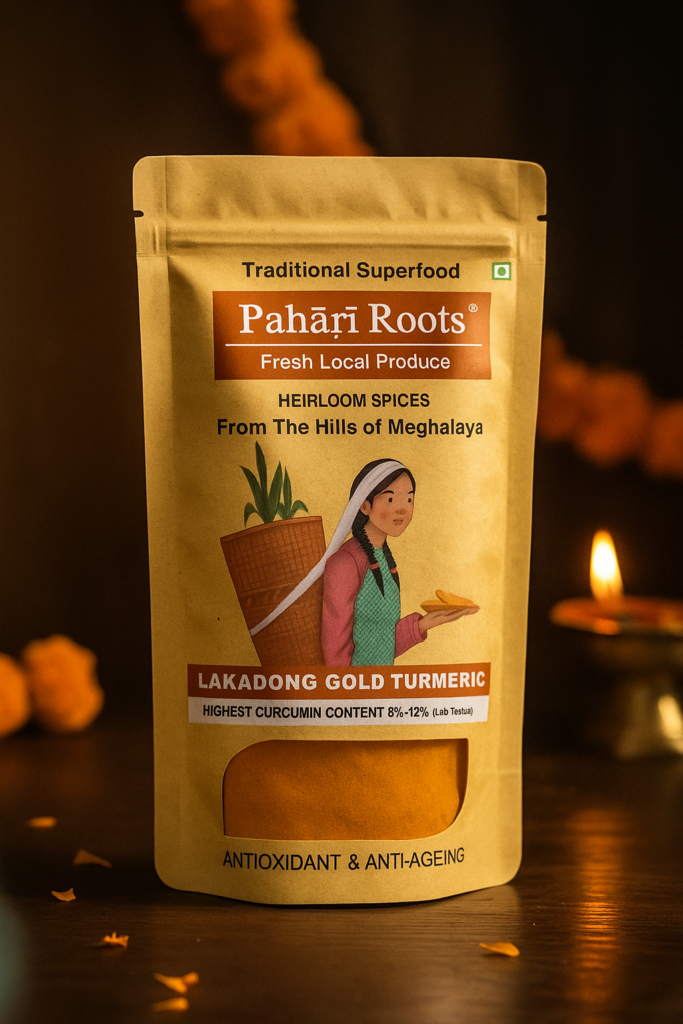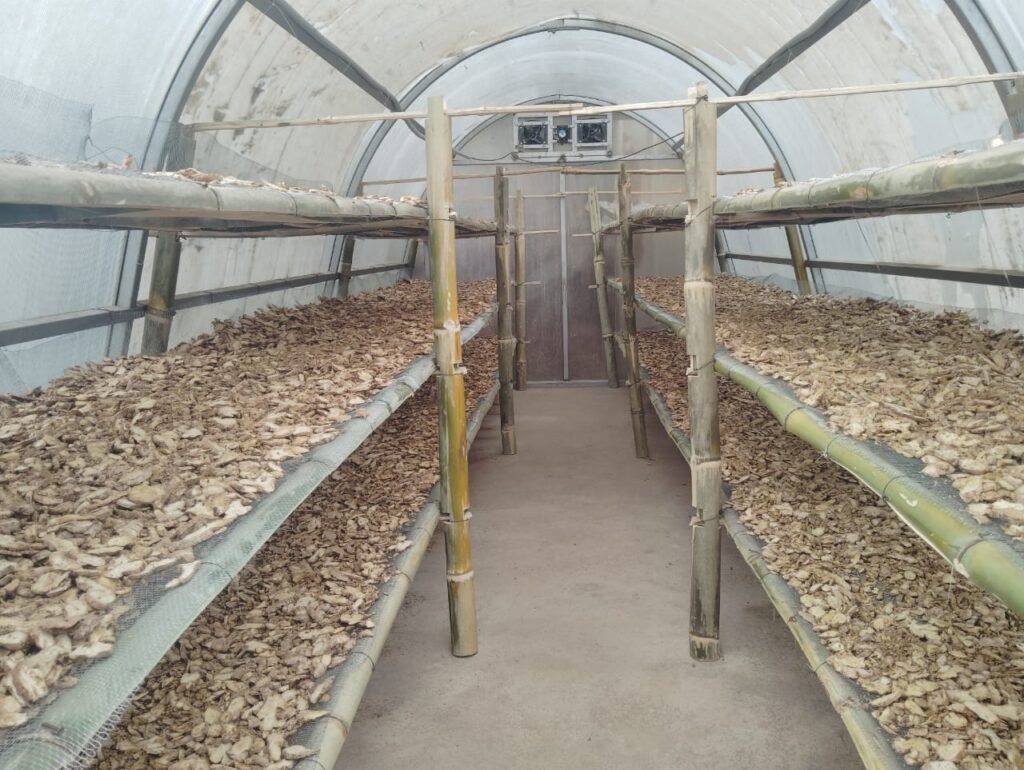
Lakadong Turmeric from Laskein Block, West Jaintia Hills, Meghalaya, is renowned for its exceptionally high curcumin content (7–9%), unique chemistry, and strong aroma. Grown at an altitude of 600–1,200m in acidic loamy soils, this turmeric is cultivated by nearly 14,000 farmers—most of whom are elderly—across 43 villages. The climate here, with moderate temperatures and high rainfall, is ideal for turmeric, but challenges include erratic weather, soil fertility decline, and minimal mechanization. Turmeric is harvested from December to March after 8–9 months of growth. Post-harvest, rhizomes undergo boiling, drying, grading, and rigorous lab testing before transport to Mumbai, where they are cleaned and packed under FSSAI norms. Sourcing is direct-from-farm, supporting local livelihoods, preserving biodiversity, and celebrating the unique attributes of this GI-tagged product.
Cultivation & Harvest
Attribute | Details |
Region | Laskein Block, West Jaintia Hills, Meghalaya |
Altitude | 600–1,200m above sea level |
Soil Type | Acidic to neutral, loamy, moderate to high organic matter |
Soil pH | 4.5–6.5 |
Climate | Subtropical, 2,500–4,000mm annual rainfall, 15–28°C temperature |
Planting Season | April–June |
Harvest Season | December–March |
Days to Maturity | 240–270 days (8–9 months) |
Yield Range | 6–8tonnes/hectare (goal: 8tonnes/ha) |
Cultivation & Harvest
Planted in raised beds after pre-monsoon showers, grown with organic inputs and crop rotation. Harvested manually Dec–Mar, timed for maturity and curcumin levels.
Challenges
- Climate stress: erratic rain, soil fertility loss, pests
- Minimal mechanization, elderly workforce
- Market access: poor roads, seasonal delays
Post-Harvest & Processing
Rhizomes are boiled, sun-dried (8–10% moisture), graded, and tested for curcumin (≥7%), aflatoxins, heavy metals, and microbes. Packed in food-grade bags and transported to Mumbai for cleaning and FSSAI-certified packing.

Comparison
- Lakadong: 7–9% curcumin, GI-tagged (2023), deep yellow, strong aroma
- Others: 2–5% curcumin, lighter, less aromatic
Sourcing & Logistics
Direct-from-farm with batch coding and traceability. Transported mainly by truck, sometimes delayed by monsoon and landslides.
Compliance Pointers
- FSSAI standards for turmeric powder; Codex Maximum Residue Limits (MRLs), allergen warnings, batch-wise lab report for contaminants (aflatoxins, heavy metals).
- All packaging is food-contact grade and labelled per FSSAI/AGMARK.
Sustainability & Social Impact
- Biodiversity through intercropping (ginger, beans)
- Livelihoods for 14,000 households, especially women and elderly
- Partnerships (ICAR, Mission Lakadong) for climate resilience
Customer Story
From Meghalaya’s misty hills, Lakadong Turmeric is hand-grown by traditional farmers who nurture each rhizome despite steep terrain and erratic rains. With curcumin up to 9%, it shines above mass-market turmeric. Harvested, boiled, and sun-dried by village hands, then lab-tested and packed in Mumbai—every batch carries purity, potency, and traceability. Choosing Lakadong means supporting both your health and the farmers who keep this golden spice alive.
FAQs (short)
- Where? Laskein Block, West Jaintia Hills, Meghalaya
- Why special? 7–9% curcumin, deep yellow, GI-tagged
- Cycle? 8–9 months
- Who grows it? Mostly elderly and women farmers
- Organic? Yes, minimal chemicals
- How processed? Boiled, sun-dried, sorted, tested
- Quality checks? Curcumin, heavy metals, aflatoxins, microbes
- Packaging? FSSAI food-grade bags with batch codes
- Main challenges? Climate variability, elderly workforce, poor market access

